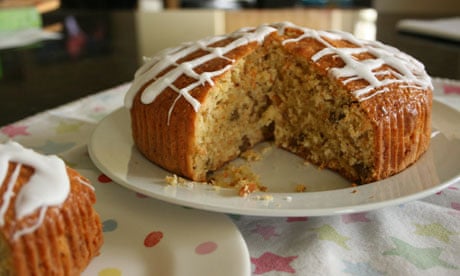I'm feeling a little messianic. Jesus isn't the only one to turn one small bread product into enough to feed five thousand. I too have been busy propagating loaves, well, cakes actually. Herman cakes, to be precise.
For anyone not yet initiated into the ritual of Herman cake creation, it is the culinary equivalent of a chain letter. Someone presents you with a jar of yeasty mix and a set of instructions on when to add sugar, flour and sift or stir it. Ten days on, you divide the mixture into five, pass four jars onto friends and, with the rest, bake yourself a very yeasty and sugary but surprisingly tasty cake.
My introduction was through a friend of my daughter. She arrived on the doorstep one morning bearing a jam jar and a note, which I stuck on the sideboard and promptly forgot about. A little while later, sitting in my kitchen, alone, I heard a loud, alarming, slurping sound, as if an invisible Homer Simpson was sitting with me, sucking through a straw. It happened again. I got up and looked around, half expecting to find a frog had come in from the garden (it sometimes happens). Then I discovered the embryonic Herman was frothing away on the side, making human masticating sounds.
The instructions that came with "him" tell me this is because "he" needs more space. Already Herman is no longer just a pot of yeast. He's a living, breathing part of the family, and as soon as my daughter comes home from school he must be moved to a more spacious home – that's a bowl to you and me. And, he must be stirred and engaged in rather one-sided conversation over the next few days until he's ready for his first meal (milk, flour and sugar) on Day Four.
He's quite an undemanding, if slightly yeasty smelling, charge. Four days of stirring and chatting later, he wants the same meal again, before being divided and potted, ready to spread a little happiness to several other families. Finally, you add more flour and sugar, eggs, cinnamon and apples and stick him in the oven. There's been so much chatting that this feels a little like turning the pet rabbit into stew. But I'm not sentimental and Herman lives on, through his four babies, I'm hungry and he's delicious.
The name Herman is taken from the Amish sweet, cinnamon-flavoured bread and the cakes have their origins in the sourdough products made by the early American pioneers. Airborne yeast was used to ferment a mixture of flour sugar and water, and then used to make pancakes, bread and cakes. What was left of original starter leavening mixture was then passed around the community for others to cook with.
These days Herman cakes are a luxury gimmick rather than a necessity and in this form they have been around for several decades. My mother remembers making and passing on Hermans before the war. I missed out on them when I was at school, though I was busy giving away the ferment needed to make real ginger beer. I can still recall the act of daring carried out by my sister when we discovered that everyone at school already had a ginger beer "plant." She began pouring the leftover mixture of yeasty, ginger, lemon and sugar down the drain, announcing with conviction "It might be live but it's not really a person."
Try shrugging off the live element to some of today's sourdough fanatics, for whom tracing the origins of the starter is almost as much a part of the process as making the bread. One online sourdough addict recently posted, with glee, that he'd got some starter from Sweden which originated in Calabria, in the south of Italy, several generations ago and smuggled it back through Birmingham airport.
Gardeners will tell you these bread makers are only doing what they've been doing for years; propagating food and passing it on. One of my neighbours does it with seedlings, handing out baby plants to the rest of the street in the hope we nurture and grow more mini tomato plants. I never quite dare tell him our garden is a strip of Astroturf and my fingers are positively ungreen. I just give him some windfall apples and hope it's a fair exchange.
The current Herman revival is gathering momentum with the help of internet chat forums and comes at a time when we are being encouraged to waste less and share more.
In essence, Herman cakes are a quirky fun way of doing something we're out of the habit of doing - sharing surpass food within the community rather than putting stuff in giant freezers or throwing it away. "Yuk," says my son, pausing mid Herman mouthful when we muse that this cake may have been started several years and many miles away. "It must be well past its sell by date."
"There is no sell by date," I tell him, which is part of the appeal. In these times of almost impenetrable packaging and obsessive food hygiene there's added pleasure to be had from eating something that has been through many hands and possibly several generations, and survived to continue the tale.

Comments (…)
Sign in or create your Guardian account to join the discussion